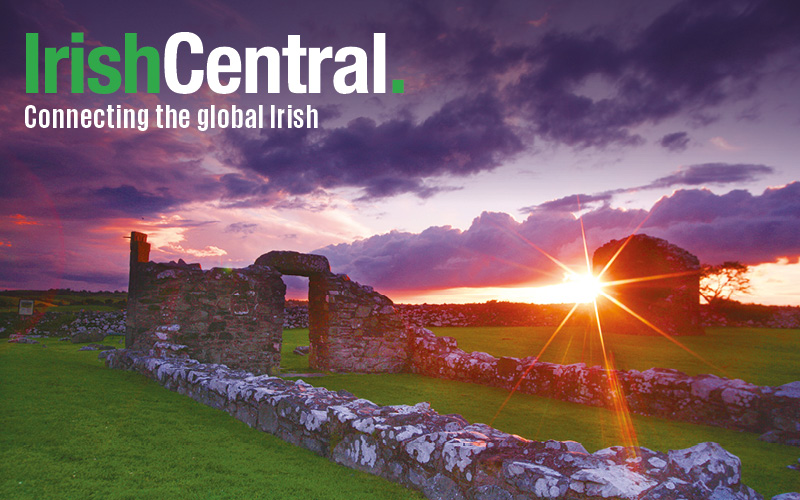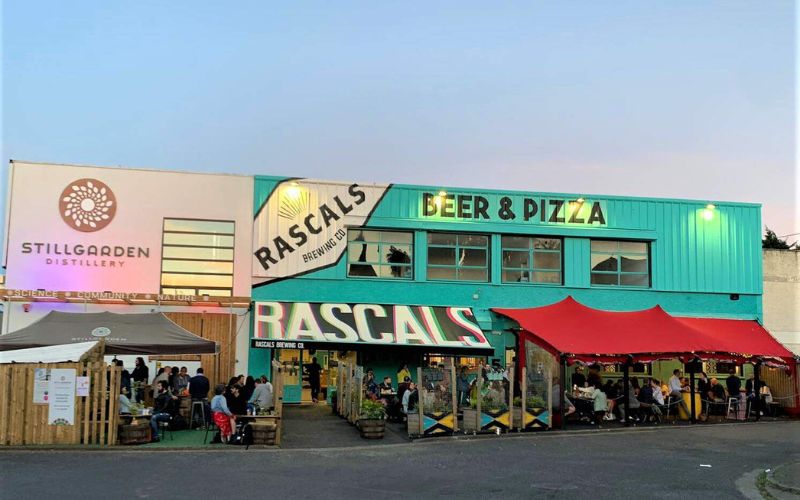In June of 2016, my wife Lorna and I took a long-anticipated vacation in Ireland. Naturally we spent most of it driving through some of the most sublime scenery we had ever explored. Of course we also found lots of foodie goodness, which is documented elsewhere in this blog. This post is for those who are considering a vacation that involves driving in Ireland.
The first thing to know is that it's expensive to drive in Ireland. Gas is expensive, of course, as it is in most of Europe. But the car rental is pricey, too. We rented from Avis at Dublin airport, and were disappointed to learn that they do not honor the CDW (collision damage waiver) insurance that many credit cards provide automatically when you use them to rent a car. The CDW cost nearly as much as the car rental, and it has a thousand-Euro deductible! They also had a super-CDW with no deductible.
Considering the way the scenic country roads are (more below), you must assume that you will rough up the passenger side of the car enough to justify the full protection. Remember: you don't want to haggle over auto body work and insurance in a foreign land when you have a plane to catch!
The next thing you already know: they drive on the left side of the road in Ireland. I got accustomed to that under normal driving conditions pretty easily, but if you are distracted by the GPS or trying to become un-lost, it's easy to slip back into instinctively driving on the right. We rented a car with an automatic transmission because I did not want to increase my frustration level while on vacation; adding left-handed shifting to the unfamiliar car, unfamiliar roads, and general lack of signage would have been just too much.
About that signage: it's awful. There are no street signs in the towns and cities. In many cases the name of the street is painted on the side of a building somewhere near the intersection, but there's no guarantee that you will see it, or that it hasn't changed in the hundred years since it was put there.
What signs there are might not be very helpful. In the Gaeltacht (the Irish-speaking northwest), many of the signs don't include any recognizable words.
Outside of the towns, signs for nearby attractions or intersections may be a quarter-mile ahead of the turn, with one or more intervening roads.
Use a GPS and have a co-pilot. The roads are narrow, and in most of the less-touristy areas they have no shoulders, and 4-foot high hedgerows whizzing past the passenger-side window. The roads are wide enough for two cars to pass, but there's no margin for error and you can't assume the other driver is keeping to his left, so you can expect to brush some hedgerows or even a stone wall. And there's no thrill quite like seeing a mighty tour-bus coming your way with no room to spare!
Of course most turns are blind on account of those hedgerows, so you really have to pay attention, stay on your own side of the road and hope any oncoming traffic does the same. The hedgerows did make life difficult, but... in late June they were filled with blooming wild fuchsia, and wild foxglove lined roads everywhere. And when you look across a vista of patchwork fields, it's the hedgerows that make the patchwork.
Ireland is green, more shades of green than we knew possible. We got at least a little rain every day of our vacation, but we also saw incredible rainbows, and those matchless greens! You see mile after mile of farmland, every patch a different shade. We saw no factory farms, and no fields of flavorless corn destined for high-fructose corn syrup. Locavore fever is very real in Ireland, and many restaurants are proud to feature food grown within 50 miles.
We also saw no barns or silos. Ireland is not Vermont. Snow is rare and fleeting. I think the roads have no shoulders because they don't need a place to put the snow, and they don't ruin the roadside soil with salt.
Bugs are rare. We drove 1750 miles and never once had to scrape the insects off the windshield. While walking in rural or urban areas, we were untroubled by mosquitoes. Lorna thinks it's because there are far fewer trees; I think the wetlands were all drained centuries ago - it's probably both of those and more, but I don't think it's pesticides. We saw the same thing in Italy, Germany, and France, also long-settled agrarian areas.
Those countries had no screens in their windows, and we were never troubled by insects. Ireland might have had screens, but we wouldn't know because it was so cool. In 15 days from late June into early July the temperature never reached 70 degrees at mid-day, and at night it got into the 50s. We saw people in parkas on July 2 in Co. Cavan! So it's no surprise that the rental cars do not have air conditioning.
We saw lots of cattle in the lowland areas, and sheep in the remoter areas. At one point we got stuck behind a tractor herding about 30 cows up the road. Another time it was sheep milling about. Vacation isn't the time to hurry about anyway.
I don't think cars get inspected there. Many times we shut off the outside air intake when we were behind one or another car belching gray exhaust.
Buying gas can be a trick. Some stations had pay-at-the-pump, many did not. Some were pump then pay, others were pay and then pump, some had a separate kiosk to pay for gas, completely unrelated to any attached convenience store.
Highway driving is pretty easy. Virtually everyone keeps left except when passing, so if you really do need to make tracks, it's easy. We very seldom saw any police (Garda) activity. We did see a few places in Co. Cork where the police had set up vans with speed-tracking cameras. As we approached, oncoming motorists kindly flashed their headlights so we slowed down and all was well. I don't know if they patrol or how often, so if you get into a fix, your phone is probably your best friend.
If you've made it this far and you're not scared yet, then a driving tour of Ireland may be just the thing for you.
We started in the south, along the uncrowded and spectacularly beautiful Copper Coast. That was a good introduction to driving in Ireland, because the roads were not crowded, there were no tour buses, and the views were absolutely gorgeous.
Then we did pretty much the entire Wild Atlantic Way, from Kinsale and Skibbereen to Malin Head on far Inishowen. Every day brought us views more wonderful than before. We saw rolling patchwork fields down to the sea, and wild cliffs above crashing surf. We saw wildflowers and megalithic structures built three thousand years before Julius Caesar conquered Gaul.
We saw countless cattle and sheep, rivers and waterfalls, colorful row houses huddled together along narrow town streets, fishing boats and ruined castles. We saw the fabled Giants' Causeway; it was a letdown after the serendipitous wonders of Inishowen, and right after that we saw a double rainbow along the dramatic coast of Co. Antrim. We saw the tourist-magnet Ring of Kerry, but it was just a warm-up for the adjacent Skellig Ring and the Dingle Peninsula. The Cliffs of Moher are high indeed, but size isn't everything and the Cliffs of Kerry were more breathtaking.
We did make a point to see all the sites that are in the tour guides - we saw the Ring of Kerry and the Cliffs of Moher, the Burren and the Giants' Causeway - they were great. But the moments that we will remember forever are those serendipitous side-road adventures when we went off the plan and almost off the map, clutching the wheel, scraping the paint, driving in Ireland.
Have you taken a driving vacation in Ireland? Share your experiences and tips in the comment section.
---
John Sgammato explores traditional and seasonal food and drink around New England in his blog the Foodie Pilgrim. His grandparents came to America from Counties Wexford, Mayo, and Cavan... and sunny Naples. You can follow his culinary adventures on the Foodie Pilgrim blog and on Facebook, Twitter, TripAdvisor, Yelp! and more.




Comments